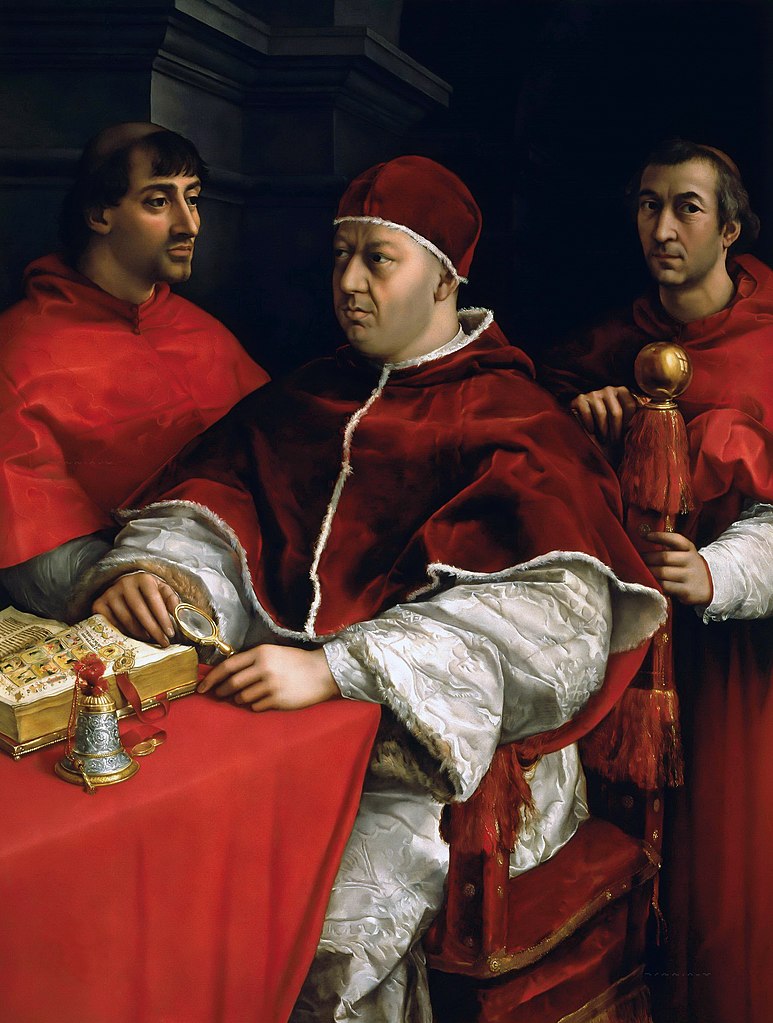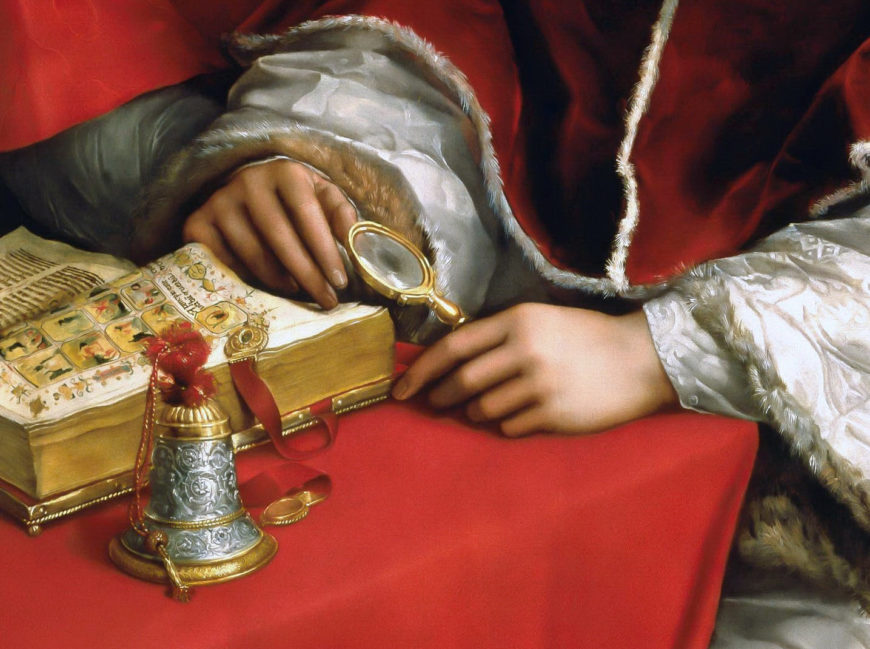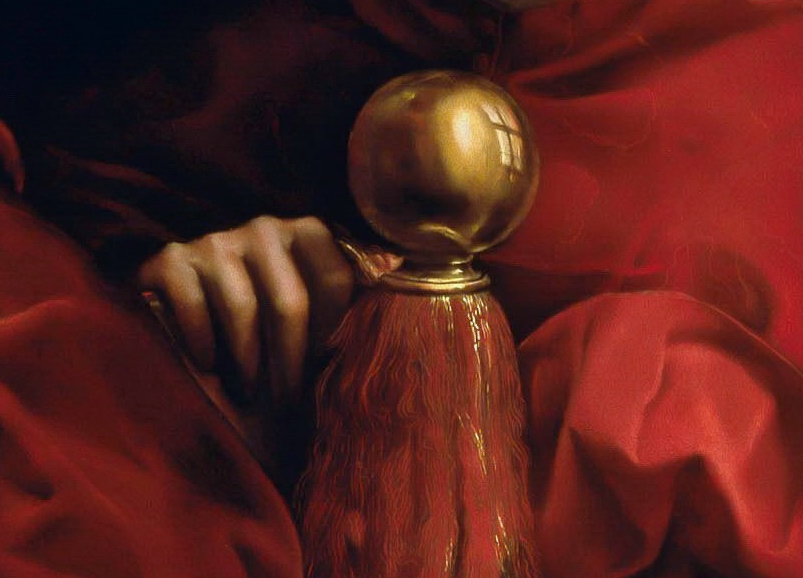Raphael, Pope Leo X

No hint of chaos
Pope Leo X, son of Lorenzo de’ Medici, is best known for his wasteful habits, lecherous activities, and hedonistic quote, “Since God has given us the papacy, let us enjoy it.” But, judging from his portrayal in Raphael’s 1518 Portrait of Leo X with Cardinals Giulio de’ Medici and Luigi de’ Rossi, one would never guess that Leo’s policies were ripping Christendom apart and would directly lead to the Protestant Reformation. Rather, Leo and his two illegitimate relatives—on the left, his nephew Giulio de’ Medici (later Pope Clement VII, who was responsible for the disastrous 1527 Sack of Rome) and on the right, his cousin Cardinal Luigi de’ Rossi—are presented as dignified, stalwart men, giving no hint of the chaos into which they were throwing Italy and the entire Christian world.
The painting is dominated by Leo, whose corpulent body and sumptuous dress are the only indications of the pope’s penchant for excess. He looks off into the distance, beyond the edge of the painting, and holds a magnifying glass while turning the page of his Bible. The painting is dominated by red paint, the color of the papacy.

Some art historians have interpreted it as a dynastic portrait. Leo was the first Medici to attain the papacy, one of the most important offices in the entire world, and he quickly elevated his family members to high ranks within the Vatican. The Bible shown with Leo has been identified as a copy of the Hamilton Bible owned by Leo’s father, Lorenzo the Magnificent, indicating his Medici lineage. The bell on the table is a symbol of power, as it was used to summon servants, and is covered with Medici insignia, such as feathers, diamonds, and the Medici palle, or “balls,” which were the most recognizable symbols of the family. Some have suggested that the globe on Leo’s chair is also meant to recall the palle.

Overall, Raphael’s portrait has been lauded as a masterful piece of realism. The unflattering likeness of Leo, along with intricate details, such as the reflection of the interior of the room on the metal surface of the ball on the chair, show a complete mastery of the art of painting and a conception of naturalism entirely in keeping with the goals of the High Renaissance. It is ironic that modern viewers can look at Raphael’s painting, meant to glorify the Medici and the authority of the pope, as a portrait of two of the worst popes in history: Leo X saw the Christian church cleaved in half, and Clement VII hid in safety as the city of Rome was destroyed around him.[1]
- Christine Zappella, "Raphael, Pope Leo X," in Smarthistory, August 9, 2015, accessed March 9, 2023, https://smarthistory.org/raphael-pope-leo-x/. ↵

